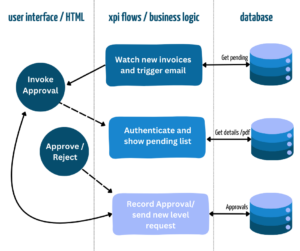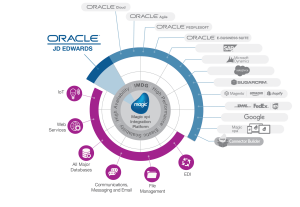JD Edwards ERP Integration and Interoperability with Salesforce.com CRM

It was the best of times, it was the worst of times;
it was the age of wisdom, it was the age of foolishness;
it was the epoch of belief, it was the epoch of incredulity;
it was the season of Light, it was the season of Darkness;
it was the spring of hope, it was the winter of despair;
we had everything before us, we had nothing before us;
we were all going directly to Heaven, we were all going the other way.
– Charles Dickens: ” A Tale of Two Cities”
These worlds may resonate with the business analyst tasked to integrate JD Edwards with Salesforce.com
On the one hand, both JD Edwards and Salesforce.com were designed with a certain amount of openness and loose coupling to allow for integration and interoperability. This is wisdom, this is light, this is hope.
On the other hand, completely divergent table structures and lack of any direct integration means that most organisations seeking that integration plunge headfirst into deep technical programming efforts. This is foolishness, this is darkness, this is despair.
Fortunately, a solution exists that allows you to automate the design of business processes that span the chasm between JD Edwards ERP which is usually running in a data centre and Salesforce.com CRM which runs in the cloud. It is not a small chasm. JD Edwards World is very down-to-earth based on the green screen world of the IBM i and RPG code. Even EnterpriseOne takes us into the jungle of Java programming and C# programming. On the other hand, Salesforce.com integration requires programming to complex Web Services involving SOAP and WSDL.
In this White Paper, Magic Software introduces Magic xpi Integration Platform for JD Edwards and Salesforce.com as a business process orchestration solution for ERP and CRM integration that requires no manual programming.
Magic examines the four pillars of CRM and consider common touch-points for either JD Edwards World or EnterpriseOne integration including transaction tables processing and Master Business Functions where available. It also discusses the importance of five key integration capabilities for Salesforce.com business process orchestration.
Finally, it describes briefly the business process design, monitoring and execution capabilities of Magic xpi Integration Platform.
Originally Posted by Magic Software – http://blog.magicsoftware.com/2017/01/a-tale-of-two-cities-jd-edwards-erp.html






